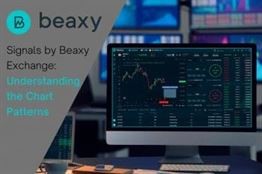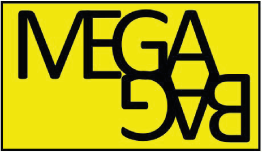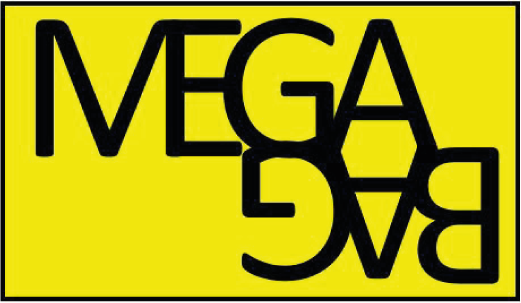Content
The government issues and decided the value of the fiat money. On the other hand, the government does not issue the commodity money and the value of the money. Fiat money is a paper money and it represents nothing but a promise or an obligation. Under a fiat monetary system, final payment never occurs because a transaction is executed with a promise, a representation, or an obligation that something else is owed. It is not tangible and does not have any defined unit of measure. Despite fiat’s regulation, inflation and recession can still occur. An additional concern is that governments can create hyperinflation by over-printing fiat currency. Federal banks fix regular cash expenditure and withdrawal limits. As a result, the charges for foreign transfers are exceptionally high and time-consuming. Also, converting one fiat currency to another is a long and tedious procedure.
- In the fiat money system, the money is not backed by a physical commodity.
- On the other hand, major examples of commodity money are things like gold, silver, copper, tea, etc.
- Coins have their own blockchains, whereas tokens are built on top of existing ones.
- To explain the legal method of exchange, example like people can use one of this money to buy something they want in order to meet their satisfaction.
The U.S. promised to redeem dollars with gold transferred to other national banks. Trade imbalances were corrected by gold reserve exchanges or by loans from the International Monetary Fund . In monetary economics, fiat money is an intrinsically valueless object or record that is accepted widely as a means of payment. Modern theories of money try to explain that the value of fiat money is greater than the value of its metal content. This stands in contrast with earlier monetary theories from the Middle Ages which were more similar to the coins-as-commodity valuation of the Arrow-Debreu model. Intrinsic Value – commodity monies have an intrinsic value based on their physical properties, such as gold, oil, and silver. Fiat money gives central banks more control over the amount and frequency of credit extensions because the control of fiat money allows the banks to “print” more money. Another way that commodity money sees inflation is through the debasement of the currency. Read more about ethereum usd converter here. Debasement means that money, typically metal coins, is devalued because there is less precious metal in the coin than the value stamped on its face.
Join millions of people in learning anywhere, anytime
The US federal initially assured citizens of retrieving the bucks in gold. Nonetheless, the existent President Richard Nixon finished theconversion potential in due to decreased gold stocks. Moreover, the Russian ruble and Chinese “flying money” are some instances of unsuccessful fiat currencies over the years. In his book “The Laws,” scholar Plato suggested scrapping silver and gold coinage and endorsed a local authority-ruled fiat currency (probably iron-made).
@BritMountjoy asks the difference between: fiat money and commodity money+Chinese silver demand linked with Spanish mines=? #is4k4vt
— parakh hoon (@parakhHoon) September 19, 2011
All investments involve risk, including the possible loss of capital. Past performance does not guarantee future results or returns. Before making decisions with legal, tax, or accounting effects, you should consult appropriate professionals. Information is from sources deemed reliable on the date of publication, but Robinhood does not guarantee its accuracy. Is a business that dominates a market with little or no challenge from competitors, and thus can do as it pleases in setting prices and producing its goods. Once upon a time, money was an IOU that could be collected at a later date. For example, a farmer might trade a dozen eggs today for 10 ears of corn at harvest. Is currency that has value because it’s backed by a government, not because it represents ownership of a physical good, such as gold. Bitcoin is engineered to be like digital gold, except that it’s much scarcer. That’s why it has the potential to be the ultimate store of wealth and a viable alternative to the fiat dollar.
What is commodity value and money?
For business owners and individuals alike, it is important to understand what cryptocurrency is, how it works, and how it compares to the more traditional currency of fiat. Governments introduced this type of money as an alternative to representative and commodity money. Commodity money is, for example, a valuable metal such as gold that we use as currency. Currency DevaluationCurrency devaluation is deliberately done in order to adjust the established exchange rates by the government and it is mostly done in the cases of fixed currencies. This mechanism is used by economies with a semi-fixed or fixed exchange rate, and it should not be confused with depreciation.
Can anyone tell me what’s the difference between commodity money and fiat money? Please and thankyou!
— renzie 🎀 (@rnzbbs) June 25, 2011
Even items such as salt or tobacco were trusted, because people knew they were well demanded commodities. However, they often went through periods of rapid and excess supply – which meant inflation would result. By contrast, gold was rare enough to prevent a huge influx in the supply of money that would cause inflation. And even though the gold rush of the 19th Century increased the gold supply significantly, it was nowhere near as destructive as the increases in the supply of other commodities, such as salt or tobacco. Another mathematical model that explains the value of fiat money comes from game theory. In a game where agents produce and trade objects, there can be multiple Nash equilibria where agents settle on stable behavior. In a model by Kiyotaki and Wright, an object with no intrinsic worth can have value during trade in one of the Nash Equilibria. The Covid-19 pandemic has exposed the flaws in our current fiat monetary system by forcing the Federal Reserve to open its piggy bank and pour out all the money it can to keep the country and economy afloat.
What are the disadvantages of commodity money?
The value of the precious metal in the coin may give it another value, but this varies over time. The value of the metal is subject to bilateral agreement, just as is the case with pure metals or commodities which had not been monetized by any government. However, nothing prevents such arrangements from being made if both parties agree on a value for the coins. For convenience and to avoid these price changes, many governments issue fiat currency. Fiat money is a government-issued currency that is not backed by a physical commodity, such as gold https://www.beaxy.com/cryptocurrency-reviews/how-to-mine-litecoin/ or silver, but rather by the government that issued it. The value of fiat money is derived from the relationship between supply and demand and the stability of the issuing government, rather than the worth of a commodity backing it as is the case for commodity money. Fiat is not backed by a physical commodity like gold, but instead is backed by the issuing government. The value of fiat currencies like the US Dollar, Yen, or Euro are based on supply and demand in the market. Servers can be hacked, and data files on your computer can be lost.
The gold standard has a long and complicated history in the U.S. and worldwide and will stay a subject for another day. And the list could go on and on; think back to yourself as a kid, and you used to swap toys, books, games, or baseball cards. These create a form of commodity money because you placed a value on that item and used it to trade with your friends. Debasement refers to lowering the value of a currency, particularly of one based on a precious metal, by adding metal of inferior value. Precious metals are rare metals that have a high economic value, such as gold, silver, and platinum. In 1971, the U.S. stopped offering foreign governments gold in exchange for U.S. currency. Monetarist theory suggests that inflation is alternatively the reduction in the purchasing power of a unit of currency in an economy. Adam Hayes, Ph.D., CFA, is a financial writer with 15+ years Wall Street experience as a derivatives trader. Besides his extensive derivative trading expertise, Adam is an expert in economics and behavioral finance. Adam received his master’s in economics from The New School for Social Research and his Ph.D. from the University of Wisconsin-Madison in sociology.
What is Commodity Money
Another example is Venezuela, whose economy saw sky-high inflation reach 1,000,000% in 2018. Its central bank began issuing 1,000,000-bolivar bills in March 2021. “Crypto” refers to cryptography, a practice of making readable text unintelligible to unwanted parties. “Currency” is a bit of a misnomer, though, because not all cryptocurrencies serve as money.
Broader measures add less liquid types of assets (certificates of deposit, etc.). The continuum corresponds to the way that different types of money are more or less controlled by monetary policy. Narrow measures include those more directly affected and controlled by monetary policy, whereas broader measures are less closely related to monetary policy actions. Economists sometimes note additional functions of money, such as that of a standard of deferred payment and that of a measure of value. A „standard of deferred payment“ is an acceptable way to settle a debt–a unit in which debts are denominated. The status of money as legal tender means that money can be used for the discharge of debts. Money can also act a as a standard measure and common denomination of trade. Its most important usage is as a method for comparing the values of dissimilar objects.
The blockchain records transactions so that the same Bitcoin or other cryptographic tokens cannot be spent more than once by the same individual. A disadvantage of using a distributed ledger is that it takes longer to update transactions than updating a centralized database. Bitcoin transactions can take up to 10 minutes to verify, for instance, making it nearly impossible to process thousands of transactions per second if Bitcoin were used as a major currency. Financial networks in the United States, for instance, must be able to handle 100,000 transactions per second. The Bitcoin blockchain can only handle 7 transactions per second, at best.
What is narrow and broad money?
Typically, ‚broad money‘ refers to M2, M3, and/or M4. The term ’narrow money‘ typically covers the most liquid forms of money, i.e. currency (banknotes and coins) as well as bank-account balances that can immediately be converted into currency or used for cashless payments (overnight deposits, checking accounts, etc).
From 1870 to 1917, countries adopting the gold standard were picking side A, where they had a fixed exchange rate and free capital flow in order to facilitate international trade. They were either pegged to the US dollar (i.e. side A), following the Bretton Woods System (i.e. side C), or free-floating (i.e. side B). The gold and silver standards are monetary systems in which the standard economic unit of account is based on a fixed quantity of gold or silver. Fiat money is valuable only because it is the duty of the government to main that value, or because the transacting parties have an agreement on the value.
![]()
M1 is the money supply measure composed of currency and checkable deposits. M2 is the money supply measure that includes M1 + savings deposits, money market mutual funds, and small-demonination time deposits . In most cases, a fiat monetary system comes into existence as a result of excessive public debt. When the government is unable to repay all its debt in gold or silver, the temptation to remove physical backing rather than to default becomes irresistible. This was the case in 18th century France during the Law scheme, as well as in the 70s in the US, when Nixon removed the last link between the dollar and gold. Although a fiat monetary system often evolves out of a fractional reserve system, this is not always the case. Sometimes the fractional reserve period has been skipped altogether. The Roman Empire is one of the most well known example where the silver based metallic system gradually evolved into a fiat monetary system based on token coins. The silver content in coins was slowly lowered until coins consisted almost entirely of tin. This situation took place over a period century, and that is probably the longest lasting fiat monetary system in the history of the world.


